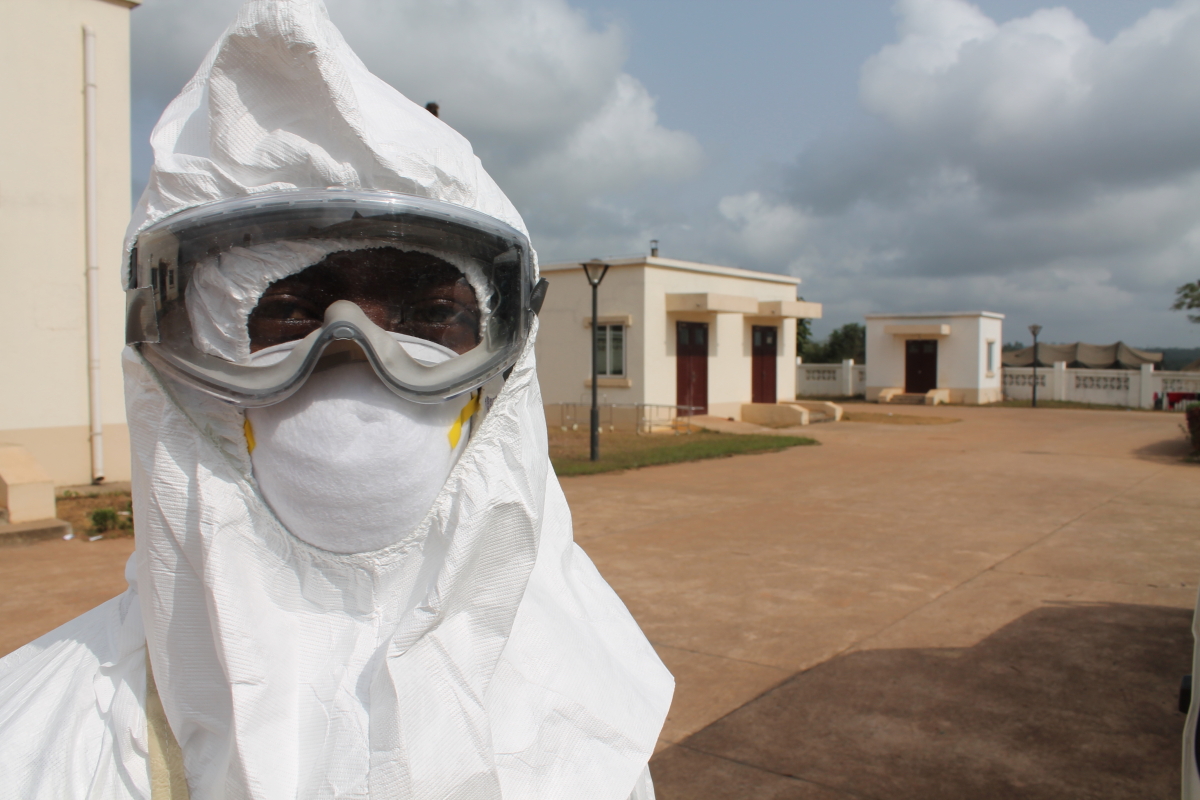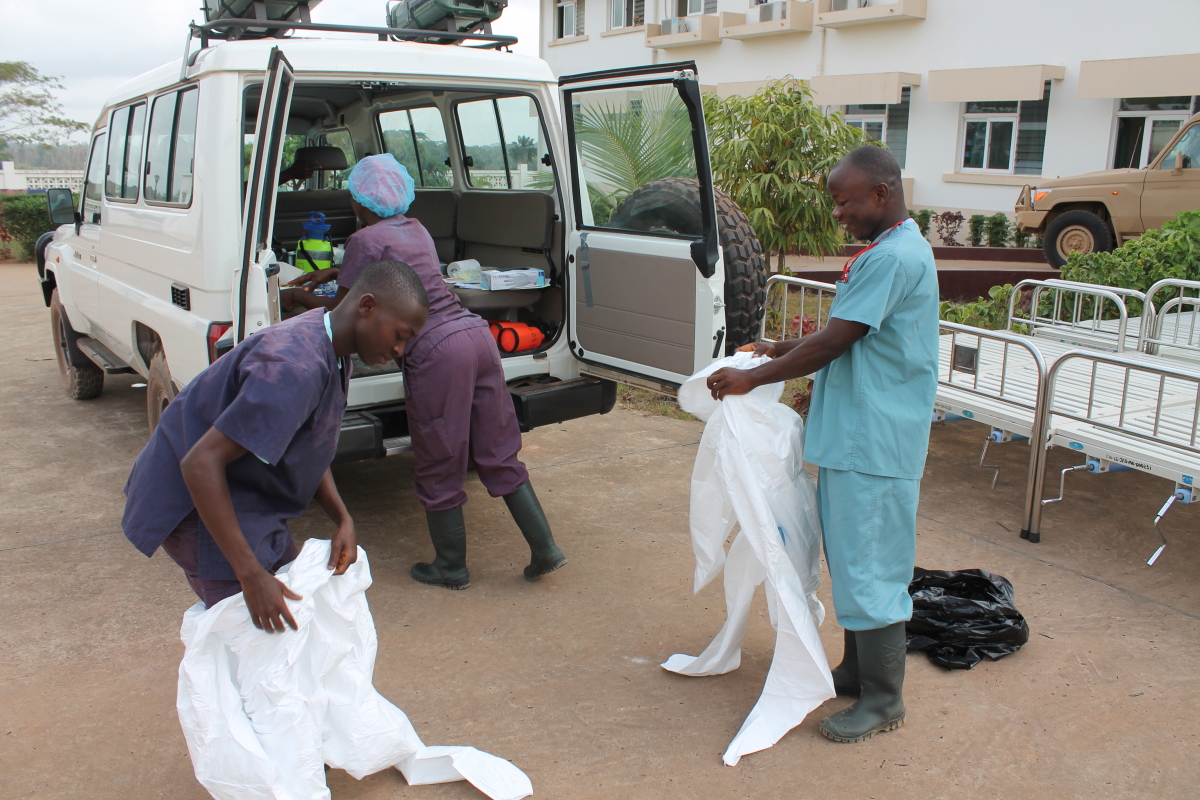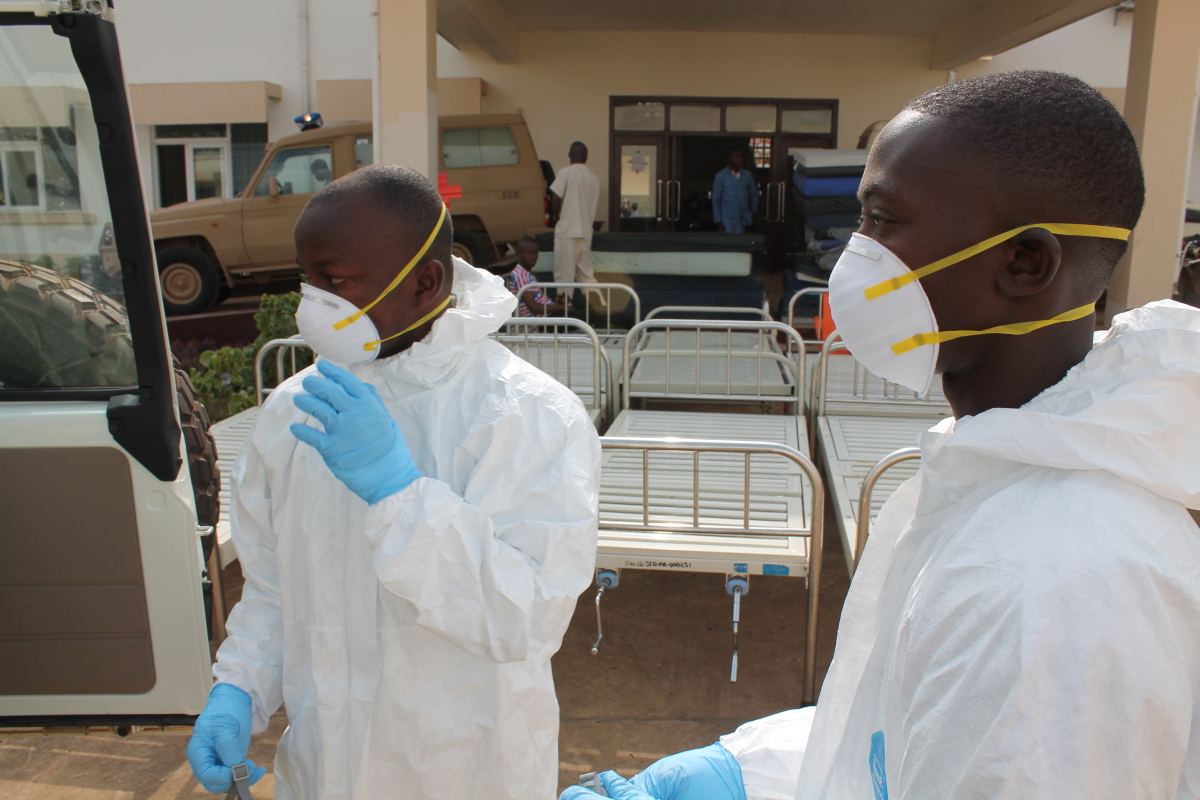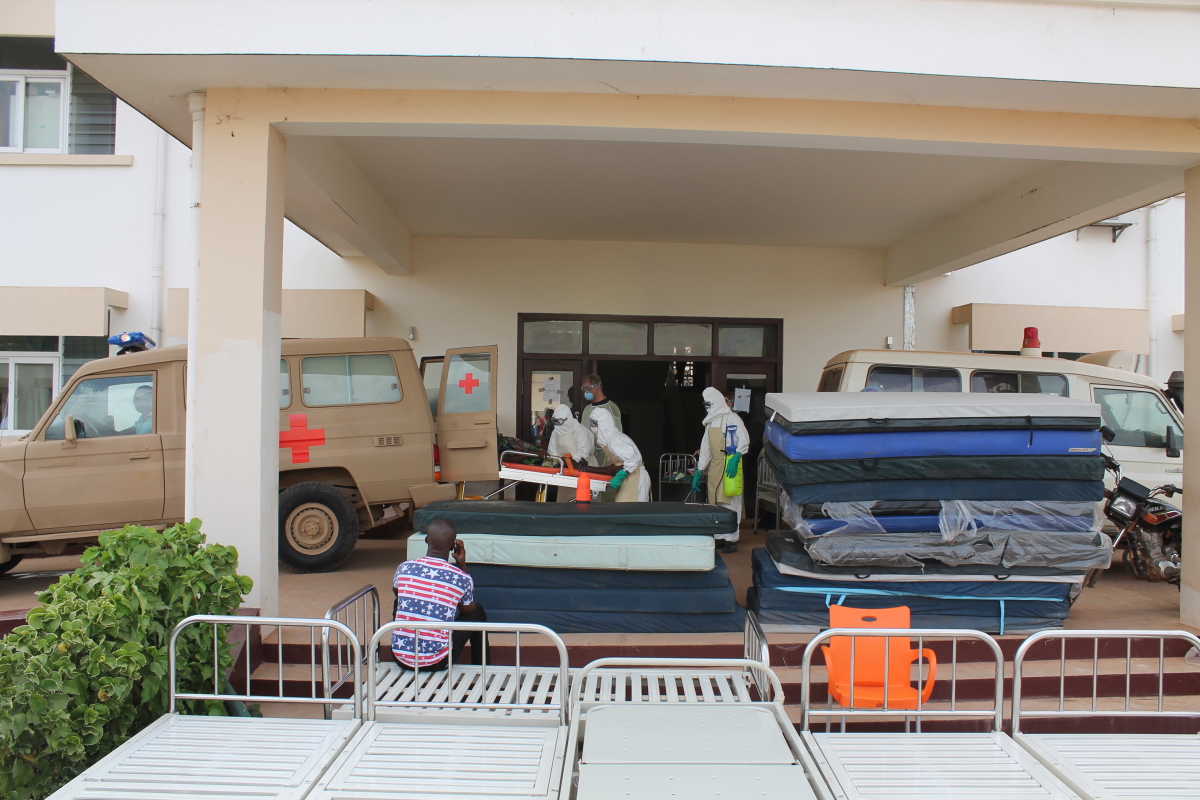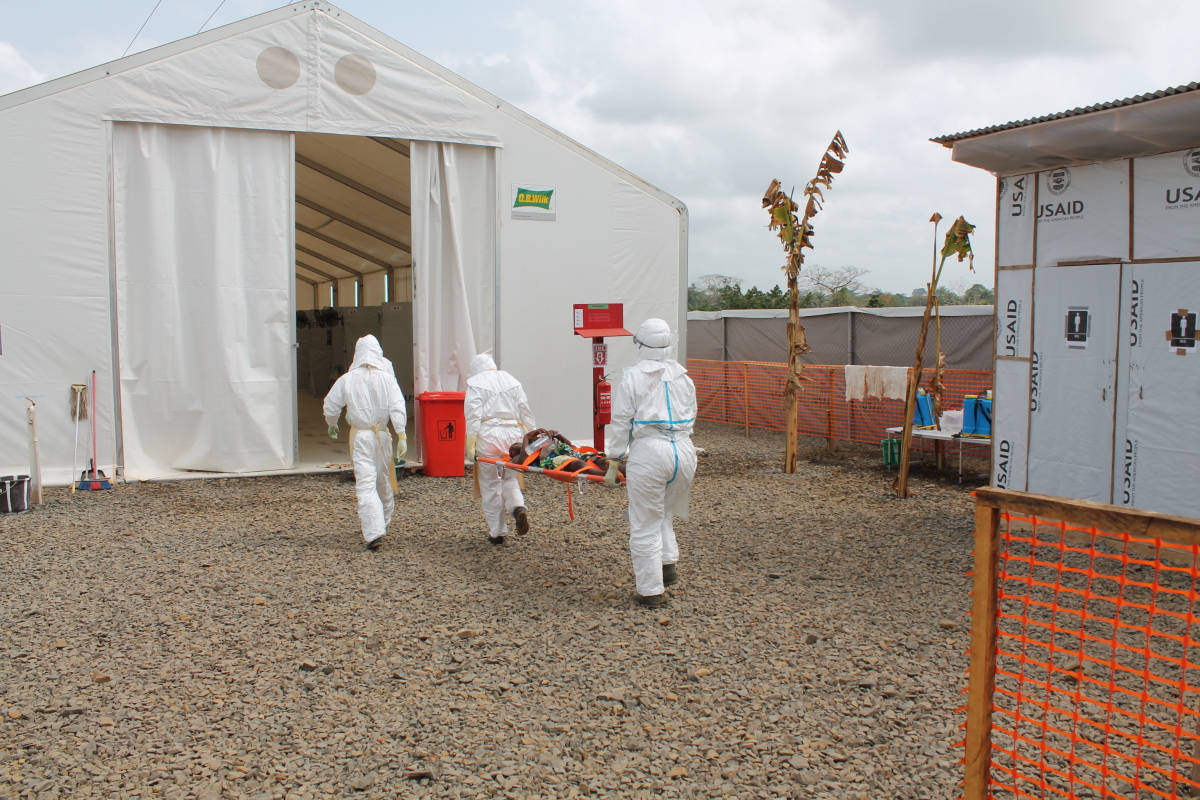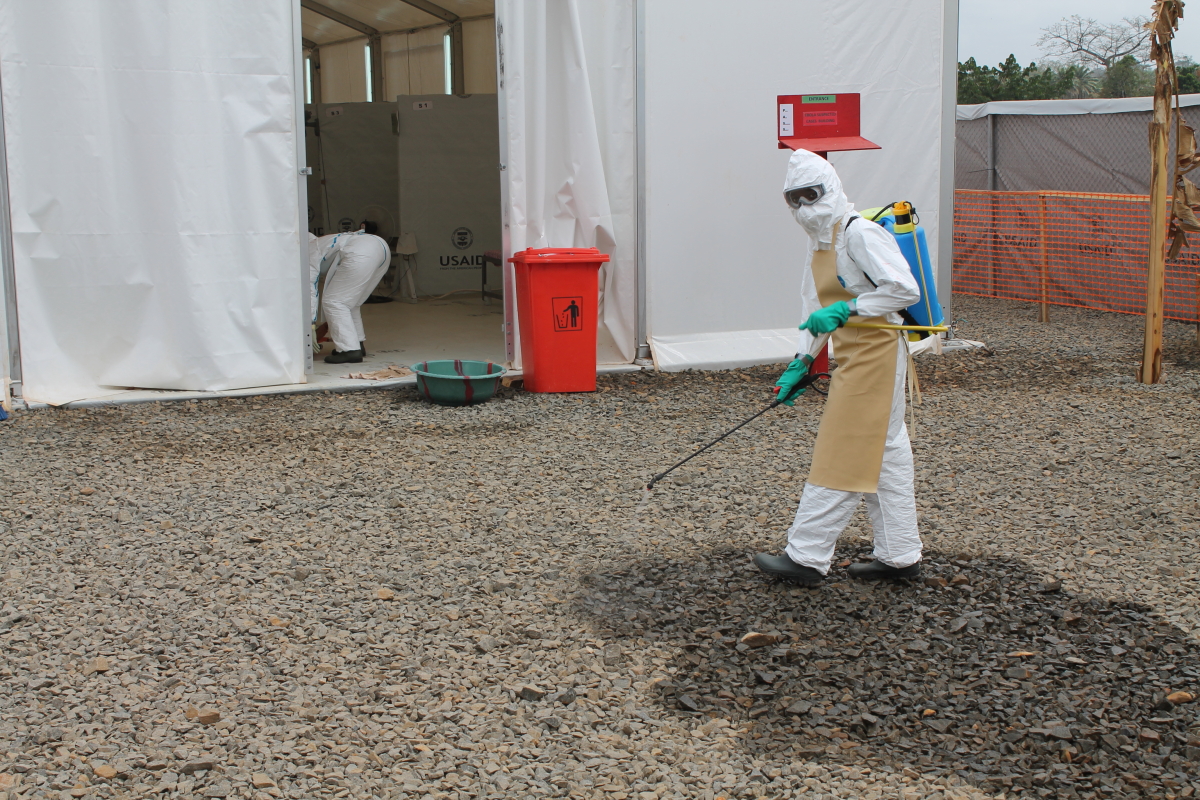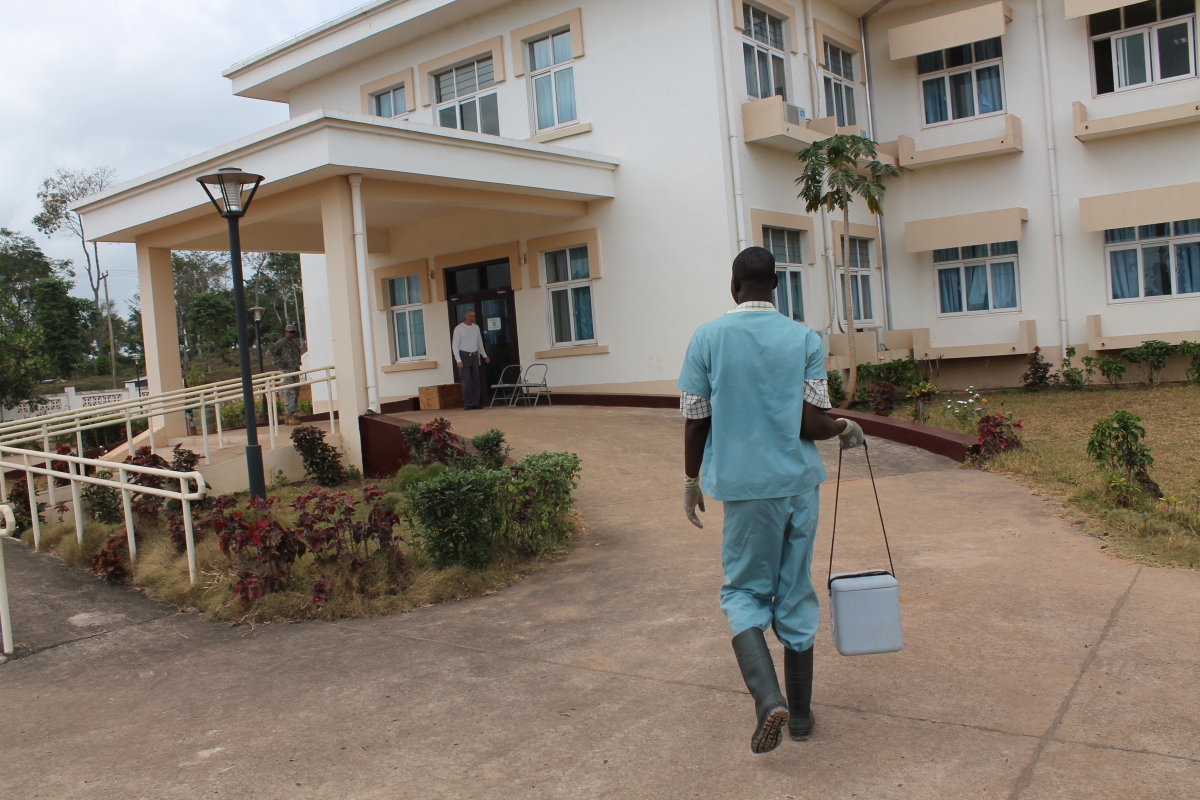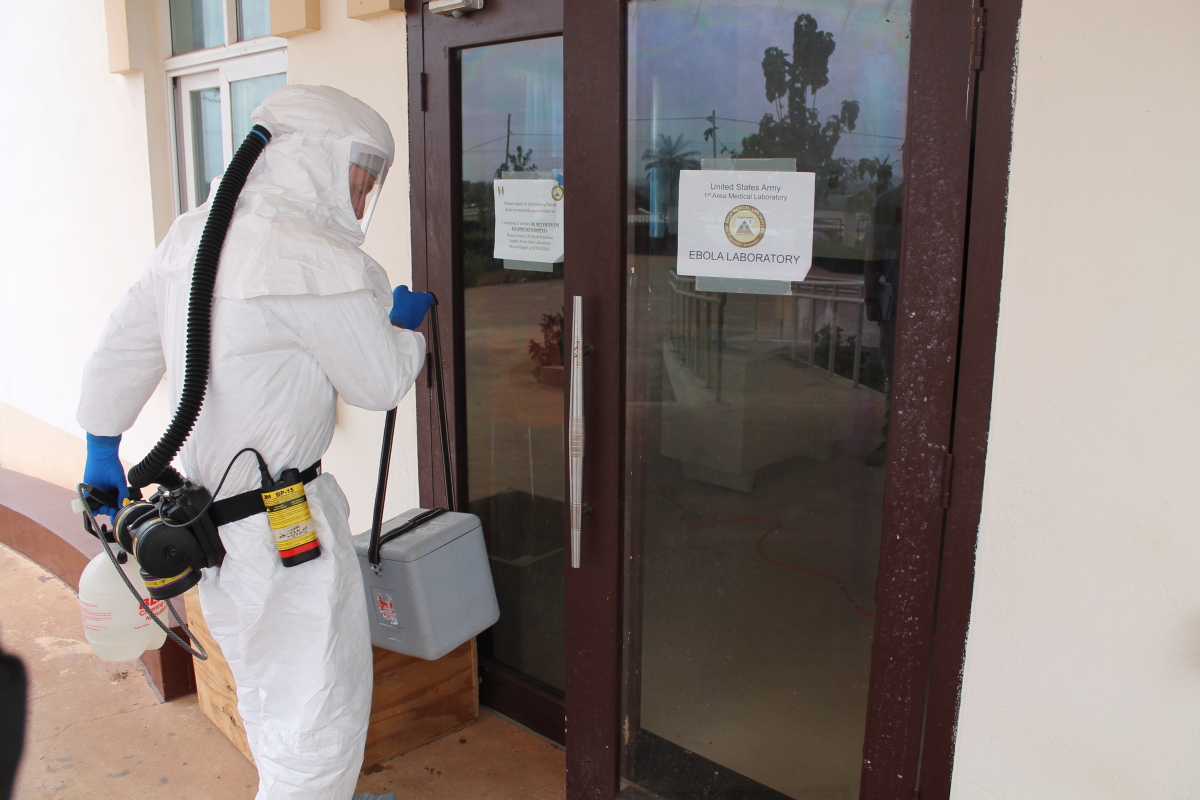The call came over the radio. A new mother was showing signs of EVD – Ebola Virus Disease – and was now considered a “suspect case”. She had just given birth 5 days prior in the large hospital next door to the Ebola Treatment Unit (ETU) in Tappita, Liberia that Heart to Heart International (HHI) is operating. This young mother had a fever, she was weak, lethargic. And so the voice on the radio said the ambulance crew was on the way to retrieve her and the newborn baby, and deliver them to the ETU.
In this tropical country, so close to the equator, an illness could be one of many things – dengue fever, yellow fever, lassa fever, malaria, among others. But in this time of Ebola, no chances are taken. So the hospital staff alerted the ETU staff. And the ambulance crew that had been training for several days in a row on procedures and building teamwork, responded. This was no training drill. This was real.
Fortunately, the Ebola epidemic in Liberia has dropped significantly through a combination of a public awareness and education campaign by the Liberian government, the response of the US military, USAID, NGOs like HHI, International Medical Corps and others, and by the Liberian people themselves, as they embrace the changes to their culture in order to kick Ebola out of Liberia. But still… the spectre of Ebola lurks.
Outside the back entrance to the hospital, the ambulance crew began to don their PPE – Personal Protective Equipment. These are the ‘space suits’ you see so many healthcare workers wearing – goggles, a body suit, triple gloves, mask. Hotter than blazes inside it under the broiling African sun. Because this was the real deal, as they pulled on the protective gear a few members of the crew began to sing a little Bob Marley tune – “don’t worry about a thing, cuz every little thing gonna be alright.” I sang along as we all could feel the “what if” hanging in the humid air.
Having one patient is one thing. Having two, and one is a baby, is something more. The newborn would have to go with the mother. It took a little more coordination and thinking through the process, as you don’t move quickly or rashly when in PPE for fear of possible exposure. But in the end, the training the crew has been doing paid off – the woman was loaded by stretcher onto the ambulance and the swaddled newborn was handed to a PPE-clad nurse to carry to the ETU.
At the ETU, the donning tent was busy with staff dressing in PPE to take their positions as the mother and child were brought in through the patient gate of the ETU and directly into the Suspect Tent, where patients wait for test results before leaving or going to the Confirmed Tent. Behind them trailed a sprayer, dousing the ground where they had walked carrying the patient, turning the path dark and wet with chlorine.
A nurse drew a blood sample from both mother and child which was then hand-carried a couple of hundred yards to the US Army lab set up inside a wing of the hospital and placed inside a box outside the door. Then, US Army Captain Jerod Brammer wearing his own PPE suit came to collect, spraying the outside of the box with chlorine before bringing the box inside to test the contents.
The woman and child’s tests came back negative. No EVD. No Ebola. And the woman and baby were taken back to the hospital, a better place for both than the sweltering suspect tent. But this story doesn’t have a happy ending. The woman died a day later. Doctors shared that another medical condition likely caused her death. The news tempered the joy of the job well done by the ETU staff and the negative test results.
Now our psychosocial team plans to help take the baby to the mother’s village. To family. But also to a world that was already difficult and hard for babies, even before Ebola came to Liberia.
UPDATE 12Feb15: The worst news. A few days after the mother died, her baby passed away too. According to our Chief Medical Officer, the cause of the newborn’s death was not determined.

